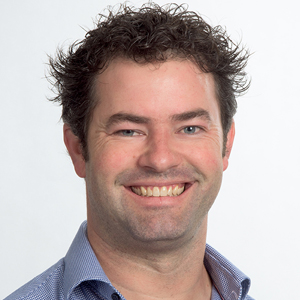Pondering the power of connections in the post–COVID-19 era
For 70 years, meetings in Lindau, Germany, have gathered Nobel Prize winners to educate, inspire and connect next-generation scientists from around the world. Through these interactions, the meetings shape the minds of future scientific leaders.
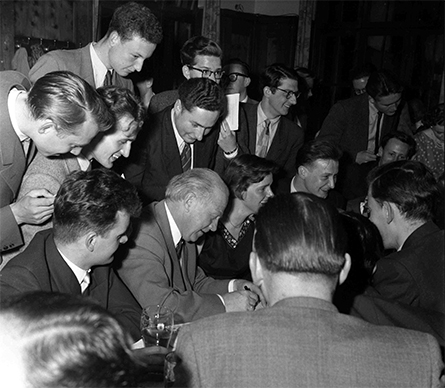
by students during the fifth Lindau Nobel Laureate Meeting in 1955.
As we move out of pandemic restrictions and toward resuming in-person gatherings, I am reminded of the origins of Lindau, my own experiences at these meetings and others, and the many lessons I’ve learned about the value of making personal connections with my fellow scientists.
The meetings begin
After World War II, German physicians Franz Karl Hein and Gustav Wilhelm Parade addressed the isolation of scientists in their fragmented country by organizing a meeting in Lindau, a tiny, picturesque island city on Lake Constance. Their aims were to inform doctors about the latest medical developments and to promote Germany’s reintegration into the wider scientific community, as John G. Simmons wrote in a 2010 article in Nature. To achieve these goals, they decided to invite Nobel laureates, the best of the best, with the help of Lennart Bernadotte, a well-connected Swedish count.
The first Lindau Nobel Laureate Meeting in June 1951 brought together 400 physicians and researchers and seven Nobel winners in the disciplines of medicine, chemistry and physics. Otto Warburg described his theory of photosynthesis, William Murphy discussed pernicious anaemia and Gerhard Domagk talked about treatments for tuberculosis. Two years later, some of the younger scientists present were invited to converse with the speakers, beginning the Lindau meetings’ transformation into a platform for lively exchanges between outstanding students and postdocs and Nobel laureates.
Colleagues who had been separated during the war were reunited at Lindau, including Max Born and Werner Heisenberg, who received Nobels in physics in 1954 and 1932, respectively. Before the war, Heisenberg was Born’s assistant at the University of Göttingen. Together, they provided paradigm-shifting concepts in quantum mechanics. When the Nazi Party came to power, Born, who was Jewish, was suspended from his professorship and forced to leave Germany. Heisenberg stayed and led the German atomic bomb program during the war. The two reconnected at the fifth Lindau meeting in 1955 and became avid participants; Born attended 16 meetings and Heisenberg 10. Together, they advanced quantum mechanics through their long friendship and their interactions with young scientists at Lindau.
Societal and political ideas have been discussed at Lindau, with ramifications beyond the purely scientific core. In 1955, the year after the U.S. detonated a hydrogen bomb on Bikini Atoll, all Nobel laureates who worked in nuclear research were invited to the meeting. They issued a joint warning against nuclear weaponry and drafted an appeal to political decision-makers “to reject force as the ultimate instrument of politics” at Mainau, a garden island near Lindau where Bernadotte owned an estate. The Mainau Declaration of 1955 was signed by the 18 laureates present at the fifth meeting.
Sixty years later, 36 Nobelists signed the Mainau Declaration 2015 on Climate Change to support the decision by nations at the 2015 United Nations Climate Change Conference in Paris to take decisive actions to limit future global emissions.
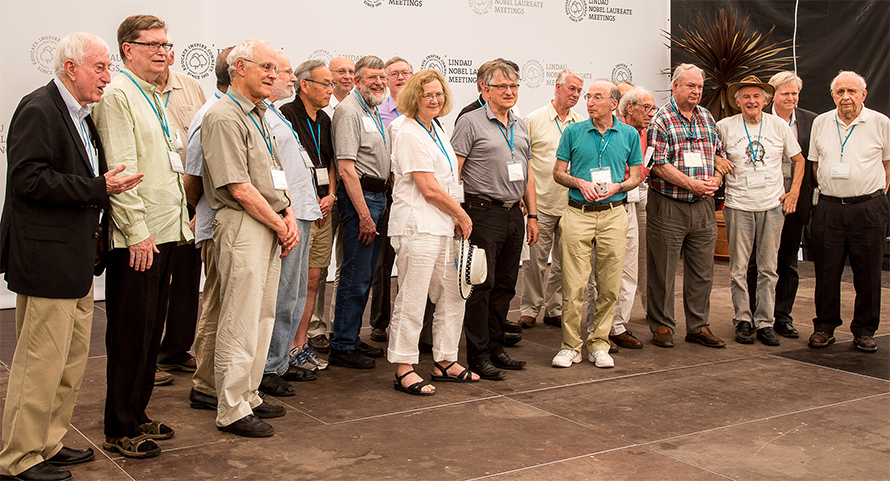
Personal impact
In 2014, I was invited to participate in the 64th Lindau meeting and a satellite workshop that preceded the meeting held by the Else Kröner-Fresenius-Stiftung, a nonprofit foundation. I was in a group composed of nine Nobel laureates, nine journal editors and 14 postdoctoral scientists. We broke into smaller groups for roundtable discussions to help determine what medical field the EKFS would fund. At my table were two Nobelists, two senior journal editors, a former EKFS award winner and two other postdocs. The medical field of psychiatric disorders was selected, and three years later, the EKFS awarded a 4 million euro prize to Karl Deisseroth, a neuroscientist and psychiatrist at Stanford University and the Howard Hughes Medical Institute.
During the 2014 meeting, I also met Michal Bassani–Sternberg, a postdoc in Matthias Mann’s group at the Max Planck Institute of Biochemistry in Germany. I was a postdoc in Ruedi Aebersold’s lab at ETH-Zürich in Switzerland. Both of us were experts in immunopeptidomics at a time when only a handful of researchers were working in the field, and opportunities to discuss our specialized discipline with scientists from other groups around the world were rare.
When I learned that Bassani–Sternberg would be attending the meeting, I emailed her, mentioning that it would be great to connect in person. She responded with enthusiasm. At Lindau we had a nonstop six-hour discussion that felt like two minutes. We started to collaborate, and in 2017 we cofounded the Human Immuno-Peptidome Project, or HIPP, an international initiative to advance the field of peptide antigen sequencing using mass spectrometry technologies, known as immunopeptidomics, under the umbrella of the Human Proteome Organization.
‘Connect with your scientific community’
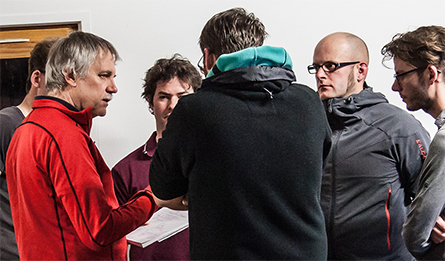
converses with immunopeptidomics experts.
Aebersold, my postdoc mentor, trained many students and postdocs, 53 of whom had formed their own academic research group. He was once asked in a conference about mentoring, “What is the trick to being so successful at training them?”
Aebersold answered, “I don’t really train them; they are who they are. We are also very fortunate in science to be surrounded by a lot of smart people, but I’ve noticed over the years that those that really stand out are those that are involved in the scientific community because they connect with their peers, they exchange and discuss ideas, they gain visibility and so much more.”
In other words, being smart, creative, rigorous and passionate is important, but connecting with other researchers and being involved in the scientific community — through teaching or organizing workshops and conferences — is what makes young researchers stand out from their peers.
This resonates with me because I’ve been involved in the scientific community since my graduate studies. As far as I remember, I’ve always been motivated to help people move forward in my own research field and also elsewhere, including the field of earth science, as I wrote in a 2016 article. Helping to unlock the scientific potential of someone or of a group of people by bringing them together is gratifying; it brings me happiness and the sensation of being truly alive and useful. Bringing people together also often has led to unexpected and fruitful connections to advance my own career.
As a Ph.D. student at the Institute for Research in Immunology and Cancer in Montreal, I helped organize our first Systems Biology in Immunology and Cancer Symposium in 2009. The organizing committee was composed almost exclusively of Ph.D. students and postdocs, and our goal was to provide a forum to improve communication among disciplines, to exchange results and ideas, and to foster collaboration in cancer and immunology research.
While we were organizing this event, a colleague connected me with Hiroaki Kitano, one of the founders of systems biology, which led to a three-month internship in his group at the Systems Biology Institute in Tokyo. My project about building a comprehensive map of the mTOR signaling network was published in 2010 as a resource for the community.
Four years later, as a postdoc in Aebersold’s lab, I invited Hiroaki to give a lecture at ETH-Zürich, thereby enabling more people to interact with him and giving myself the opportunity to collaborate with his team on another project, which led to another publication in 2017.
The evolution of the HIPP
When I was in Aebersold’s group, his annual scientific retreat in Tschamut, a village in the Swiss Alps, was a perfect time and environment to brainstorm and discuss science as well as enjoy outdoor activities with colleagues. The group had four or five scientific sessions on different topics over two days, each organized and presented by small groups that had spent about a month preparing.During my second year in the lab, I organized a session on immunopeptidomics for the upcoming retreat and invited some of my collaborators from Australia, California and Germany to help me prepare the session. I had met with them over Skype, but connecting in person further strengthened our collaborative spirit. After the retreat, that collaboration led to two community-oriented immunopeptidomics papers. The feeling of building a new research community motivated me to initiate the HIPP.
Inspired by the 64th Lindau meeting and all that followed, I decided that the time was ripe to bring together the immunopeptidomics community. I asked Bassani–Sternberg to co-organize the first international HIPP workshop. In May 2017, 40 leading scientists and industry representatives from 18 universities and nine companies convened in Zürich for the meeting, which was divided into two main activities: scientific talks by immunopeptidomics leaders and roundtable discussions that were inspired by the EKFP meeting I had attended three years earlier.
In this workshop, we set a long-term goal of mapping the entire repertoire of peptides presented by human leukocyte antigen molecules using mass spectrometry technologies and making its robust analysis accessible to any immunologist. We outlined the specific challenges to this goal and, within this framework, structured a multipronged program aimed at addressing these challenges and implementing solutions. Pillars of that program were method and technology development, standardization, effective data sharing and education, as we wrote in our 2017 article in Immunity.

Members of the HIPP initiative since have published Minimal Information About an Immunopeptidomics Experiment, or MIAIPE, to standardize methods. An international summer school program was launched in 2018 to expand the community more rapidly. New public–private partnerships were discussed during the second HIPP workshop in 2019. The SysteMHC Atlas project was created to enable effective immunopeptidomic data sharing. A new executive committee was created, and the second summer course is expected to take place in 2022.
The launch of the HIPP, catalyzed by our participation at the 64th Lindau Nobel Laureate Meeting, is likely to contribute to groundbreaking advances in precision medicine, such as the Human Immuno-Peptidome Project published in Molecular & Cellular Proteomics.
Making connections after COVID-19
In-person connections among researchers are important to move science and society forward. COVID-19 has disrupted those moments, and new initiative and investment will be needed to encourage science connections after the pandemic so that young scientists can thrive. Here are a few suggestions.
Internal funds from university departments that have not been spent during the pandemic could be reinvested to encourage science connections through organizing symposiums and workshops by students and postdocs. New leadership awards could be created to support activities of talented young individuals with community-building skills.
We need to look for an event similar to the first Lindau Nobel Laureate Meeting. The Lindau doctors were bold and determined to get Germany out of isolation after World War II. As a result, the Lindau meetings continue to shape the minds of scientific leaders 70 years later. Funding organizations could support bold and creative Lindau-like scientific events in the near future.
Just as the pandemic radically changed the way we interact with each other, an unpredictable, groundbreaking event could be created to change the way we will connect and reconnect after the pandemic. This will depend on the support of funders and the strength of our collective imagination.
(Learn more about the history of the Lindau Nobel Laureate Meetings here, and watch the Nature video “The spirit of Lindau” here.)
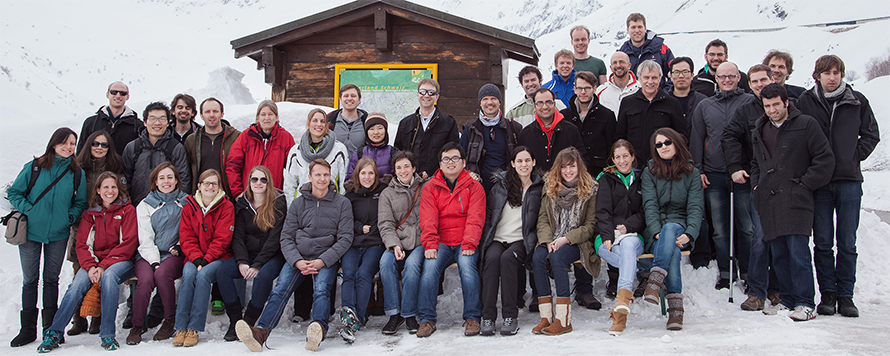
Enjoy reading ASBMB Today?
Become a member to receive the print edition four times a year and the digital edition monthly.
Learn moreFeatured jobs
from the ASBMB career center
Get the latest from ASBMB Today
Enter your email address, and we’ll send you a weekly email with recent articles, interviews and more.
Latest in Opinions
Opinions highlights or most popular articles

The tortoise wins: How slowing down saved my Ph.D.
Graduate student Amy Bounds reflects on how slowing down in the lab not only improved her relationship with work but also made her a more productive scientist.

How pediatric cataracts shaped my scientific journey
Undergraduate student Grace Jones shares how she transformed her childhood cataract diagnosis into a scientific purpose. She explores how biochemistry can bring a clearer vision to others, and how personal history can shape discovery.

Debugging my code and teaching with ChatGPT
AI tools like ChatGPT have changed the way an assistant professor teaches and does research. But, he asserts that real growth still comes from struggle, and educators must help students use AI wisely — as scaffolds, not shortcuts.

AI in the lab: The power of smarter questions
An assistant professor discusses AI's evolution from a buzzword to a trusted research partner. It helps streamline reviews, troubleshoot code, save time and spark ideas, but its success relies on combining AI with expertise and critical thinking.

How AlphaFold transformed my classroom into a research lab
A high school science teacher reflects on how AI-integrated technologies help her students ponder realistic research questions with hands-on learning.

Writing with AI turns chaos into clarity
Associate professor shares how generative AI, used as a creative whiteboard, helps scientists refine ideas, structure complexity and sharpen clarity — transforming the messy process of discovery into compelling science writing.

